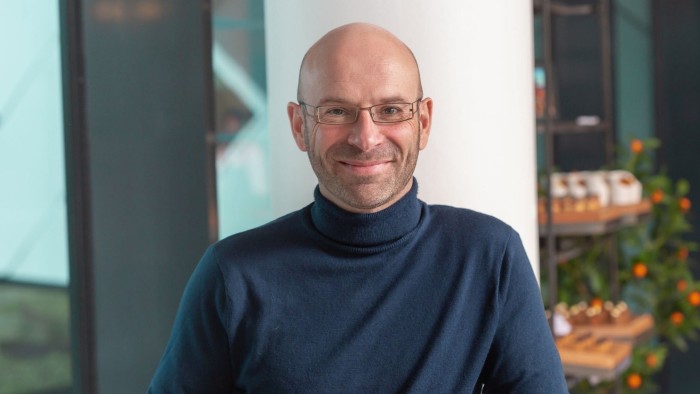Biotech boss tells Europe to invest if it wants a homegrown sector

Roula Khalaf, Editor of the FT, selects her favourite stories in this weekly newsletter.
Europe needs to learn from US shareholders willing to make big bets on biotech if it wants to create a thriving homegrown industry, according to the chief executive of Argenx, one of the bloc’s largest biotech companies.
Tim Van Hauwermeiren told the Financial Times that Europe has a “chicken and egg” problem: specialist healthcare funds are scarce because not enough biotechs are available to invest in — and biotechs are scarce because domestic investors do not support them.
Argenx’s shareholder base is dominated by specialist US investors, who Van Hauwermeiren said really take the “long-term view and are willing to take the risk”. “Because in a sector like biotech, the returns can also become disproportionate if you have a real benefit,” he said.
Despite having a product on the market and being identified by analysts as a potential acquisition target for several large pharmaceutical companies, many European shareholders are still reluctant to invest in Belgium-based Argenx, with Scottish fund Baillie Gifford a rare exception.
“I think we have been ticking a number of important boxes for European shareholders. I think the last box they’re still waiting for will be the point of break-even, where we turn the corner on profitability,” he said.
Argenx had a rollercoaster year in 2023, with shares rising about 40 per cent after a positive trial result in July, and then dropping as much as 29 per cent after a negative finding from a different study published in December.
The company is trying to expand the use of its immunology drug Vyvgart to different diseases. It is used against a rare chronic immune disorder called myasthenia gravis, which causes muscle weakness.
The immunology drug market is growing as researchers discover how to take a more targeted approach to treating autoimmune disease, similar to scientists’ efforts to tackle cancer over the past decade.
In July, Argenx reported a positive trial result that showed Vyvgart could be used as a treatment for chronic inflammatory demyelinating polyneuropathy, a condition where the immune system attacks the protective coating around nerves. On the back of this success, the company raised $1.1bn in a follow-on offering, the largest of its kind in the biotech sector last year according to research firm Dealogic.
But a trial to use the drug to treat primary immune thrombocytopenia, a blood-clotting disorder, failed to achieve its goals, hitting the stock when the results were published in late November. Van Hauwermeiren said the company is still analysing what happened in the study.
In December, Argenx said it would not pursue using the drug for the skin disease pemphigus, after a trial failed to show it worked significantly better than a placebo.
Many European biotechs are bought by large drugmakers long before they have an approved product. Van Hauwermeiren said he is bucking that trend by building a “global sustainable company” and a “company which can fly on its own wings”.
But he said the management will always do what is in the best interests of shareholders if presented with a deal offer.
“The only thing which we can do as a management team is make sure everyone understands what is the business plan . . . [in] a standalone scenario over the next five years. And then people can also make an objective comparison if and when there would be a bid on the table.”
Suzanne van Voorthuizen, head of life sciences equities at investment bank Kempen, said the company’s potential “wholly owned megablockbuster” drug makes it attractive to acquirers.
But she added that given Argenx has a market capitalisation of $20bn, a suitor would need to bid up to $40bn. “Deals of that size occur once a year, every two years. There are not that many potential buyers.”
Comments